With Update 0.10.0 players now have the Patriot legendary outfit for the SEAL collection available for purchase. This article will explain what makes the winter equipment of the USA's Navy SEAL unit interesting.
Starting with Update 0.10.0 all legendary outfits in Caliber have received the following benefits:
- +25% battle XP;
- +20% battle Credits;
- +10% Contract XP to all operators for fighter with a legendary outfit.
The Navy SEAL unit of the USN Special Ops Forces are versatile specialists. There’s a reason the SEAL abbreviation includes three environments: Sea, Air and Land.

The Navy SEALs’ capabilities are many — they can perform reconnaissance and sabotage behind the enemy’s lines, coordinate artillery, fight terror and participate in search-and-rescue operations.
Navy SEAL training takes long and grueling months during which they go through tens of different courses and are subjected to incredible mental and physical strain. They’re taught diving, wielding various weapons, parachuting, combat engineering and survival in extreme conditions. The program includes training at sea, in the air and on land, training at combat deployments from submarines, helicopters and speedboats — and that’s just a small sample of the SEALs’ training course.
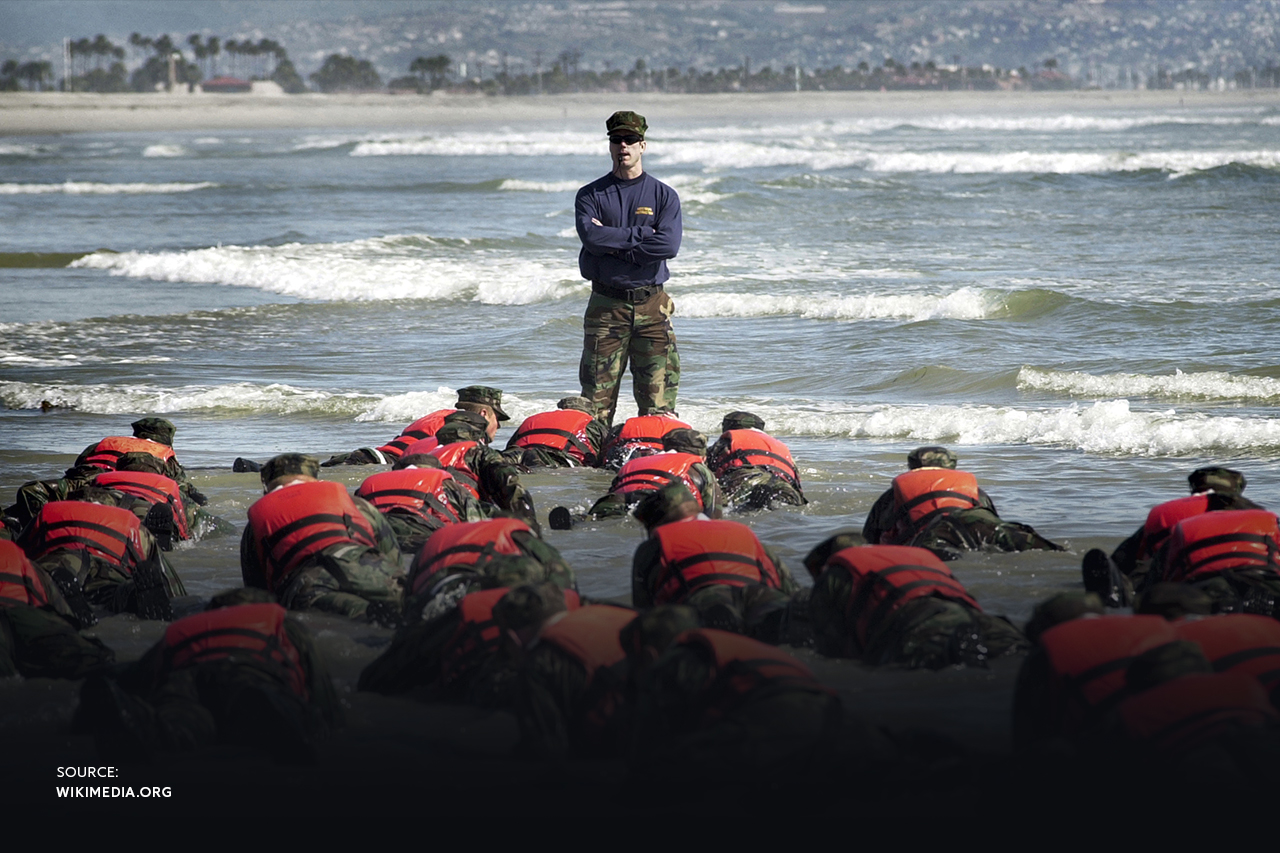
The Navy SEAL officer training is notorious for the Hell Week. It’s a trial which lasts for five days. The seals are only allowed to sleep for two hours per day during the trial, sometimes standing upright. The rest of the time they spend in timed foot races, obstacle courses, races on oar-propelled rubber boats during storms and other extreme challenges at the limit of human capabilities.
A Hell Week episode was part of Ridley Scott’s war drama G.I. Jane. The lead role in the movie was played by Demi Moore. Her character was Lieutenant Jordan O’Neal who volunteered to become the first female Navy SEAL officer in the USA.
In the beginning of the XXIst century, after the events of September 11th, 2001, the Navy SEAL training was expanded with cold weather conditions. The reason behind that is that after the terror attack on the World Trade Center the SEALs were transferred to Afghanistan from the Camp Doha American base in Kuwait. The region surprised the American special ops unit: it had a subtropical continental climate with a cold winter and a hot and arid summer, with 45-degree temperature fluctuations — from +25 to -20 degrees Celsius within one month. The fickle, sometimes very unexpectedly bad weather was an unpleasant surprise for the combat divers.
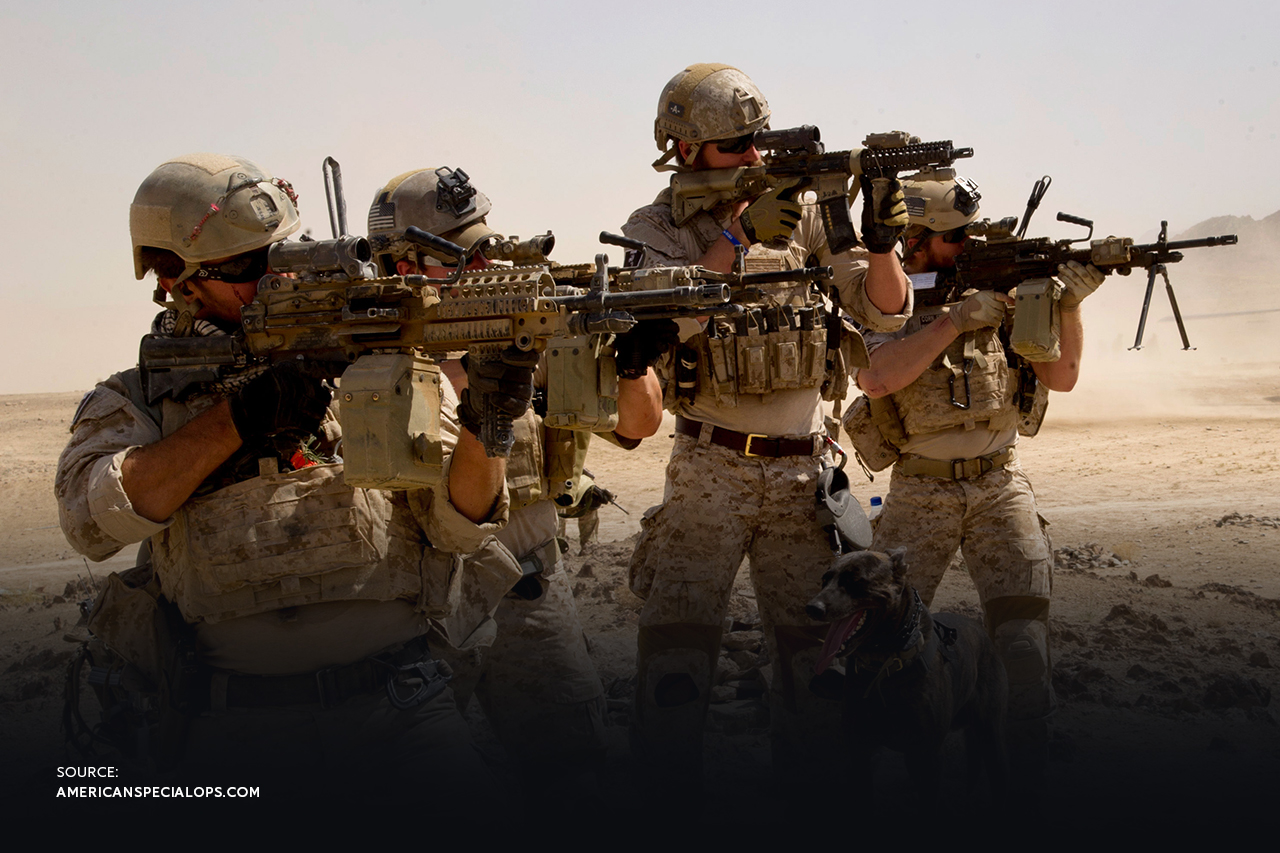
After the first SEAL deployments to Afghanistan, their training in the USA had to be changed. 2002 saw the beginning of a new course, focused on survival in cold weather. The instructors of this course used all the experience learned from the cold Asian mountains when designing it. A base was selected to host the training — one in Alaska, near Kodiak, with a wet subarctic climate, mountains, snow, and, of course, frigid water.
The new training program has Navy SEAL officers learn the theory and practice of operating special winter equipment, learn to build shelter in the mountains, do mountain climbing in low temperatures, train ski-walking and snowshoeing, learn the basics of pathfinding in extreme conditions and have mandatory training in freezing water. Special attention is paid to weaponry — after all, the SEAL’s life in the frozen desert depends on the condition of the assault rifle and its ammo.
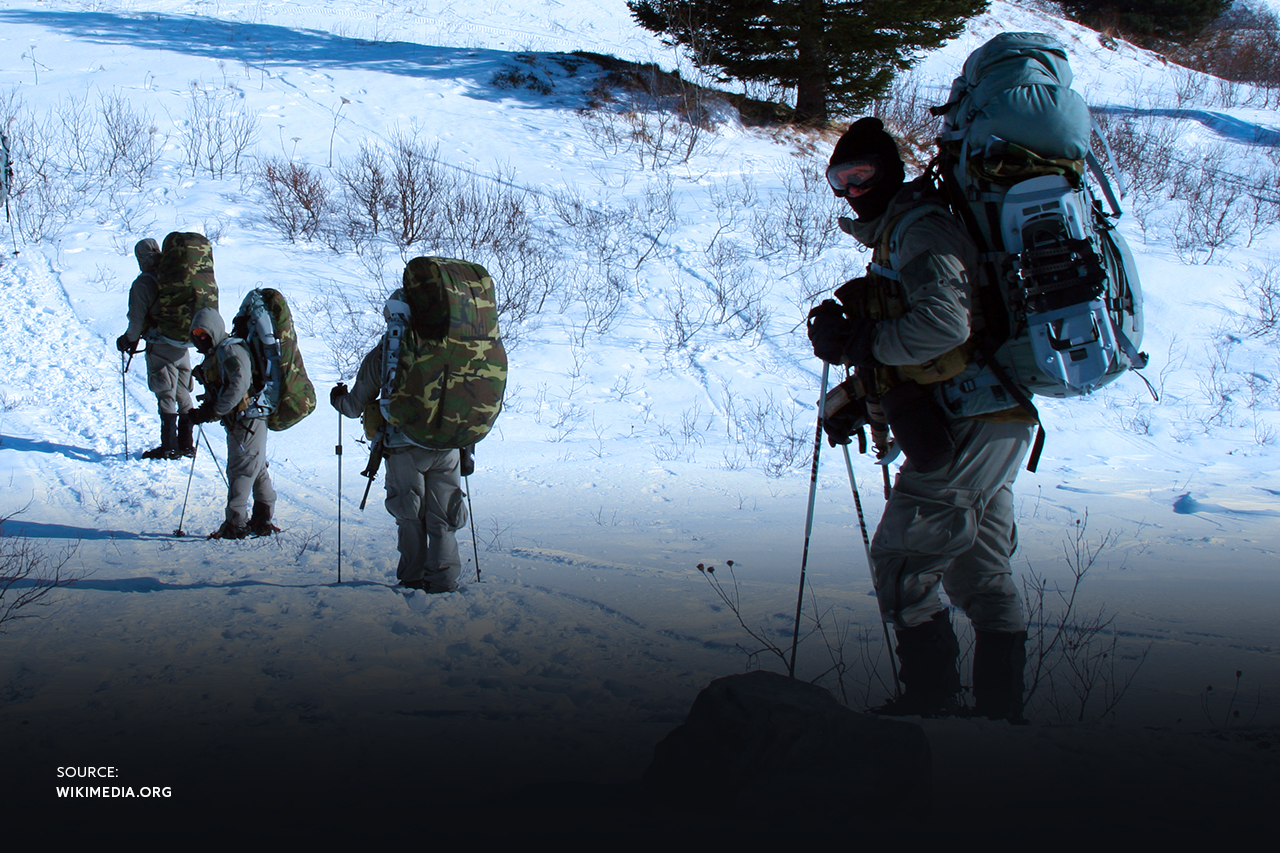
Navy SEALs performed many operations in the snowy mountains of Afghanistan, so we decided on an outfit that includes equipment for the cold climate.
The main way the operator is protected from the environment is the PCU LVL 7 coat. Its main feature is the PrimaLoft filling. It’s a synthetic alternative to fluff which keeps heat in even when wet and provides excellent thermal insulation. Another important feature of the filling is that it can be heavily compressed, making the coat take up little space and allowing it to be carried in a compression bag.
To protect themselves against the weather, the operators wear web gear under the coat, keeping it open. In case of a sudden blizzard, they can quickly zip the coat up and hide their supplies and ammo from the precipitation. That’s especially important in mountainous terrain — a clear and sunny sky can very quickly be replaced with wet snow and strong wind. This can lead to frost on clips and ammo, which would hinder the officer’s combat readiness.
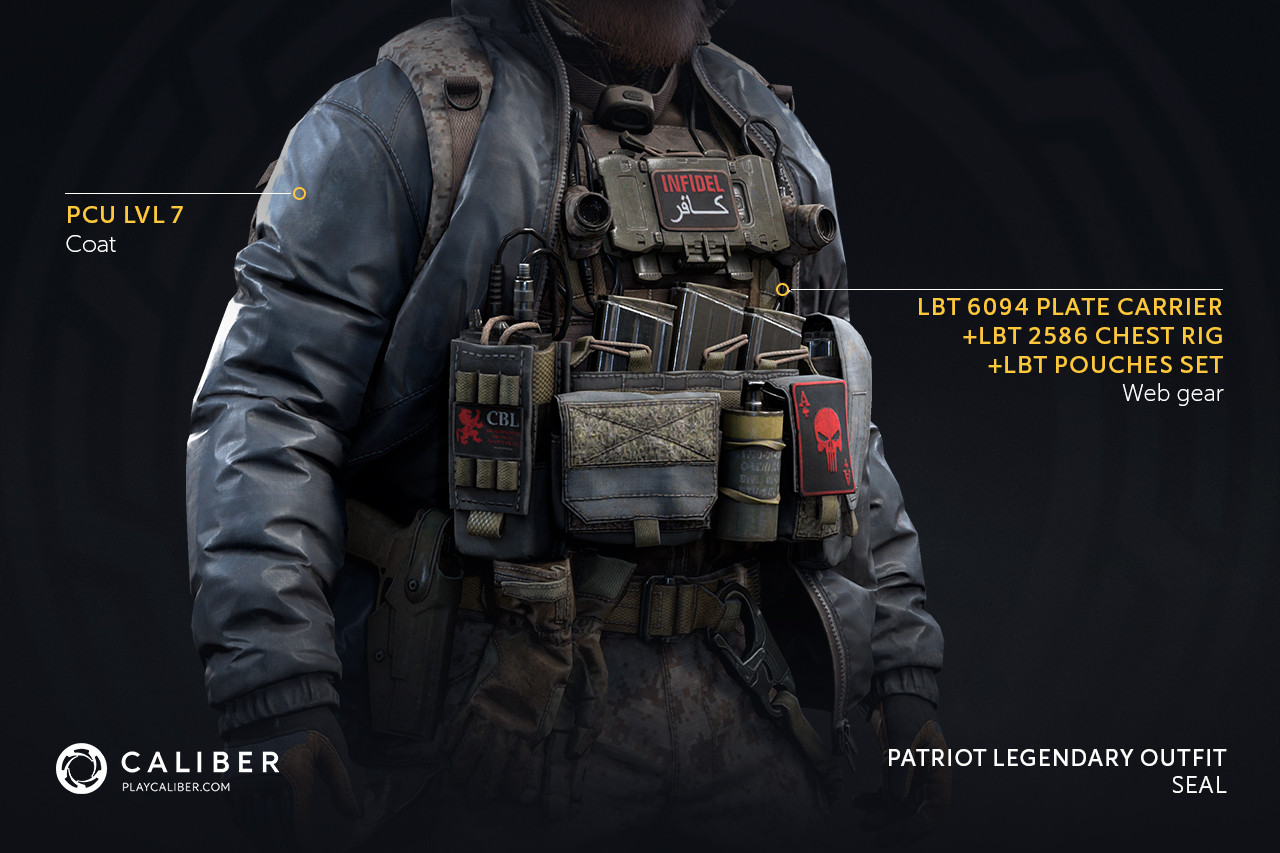
Another important part of equipment in mountains are the gaiters — garments worn over the shoe and lower leg. They help the pants cling to the body comfortably and prevent moisture from getting in.
The Crocodiles model from Outdoor Research has been developed using a membrane that lets moisture dry off the leg while preventing any from getting in from the outside. The outer layer consists of a strong and rugged nylon Cordura to prevent wear and tear. Unlike high boots, gaiters are quick to dry, and once the extreme conditions pass they’re easy to take off, leaving trekking boots on.
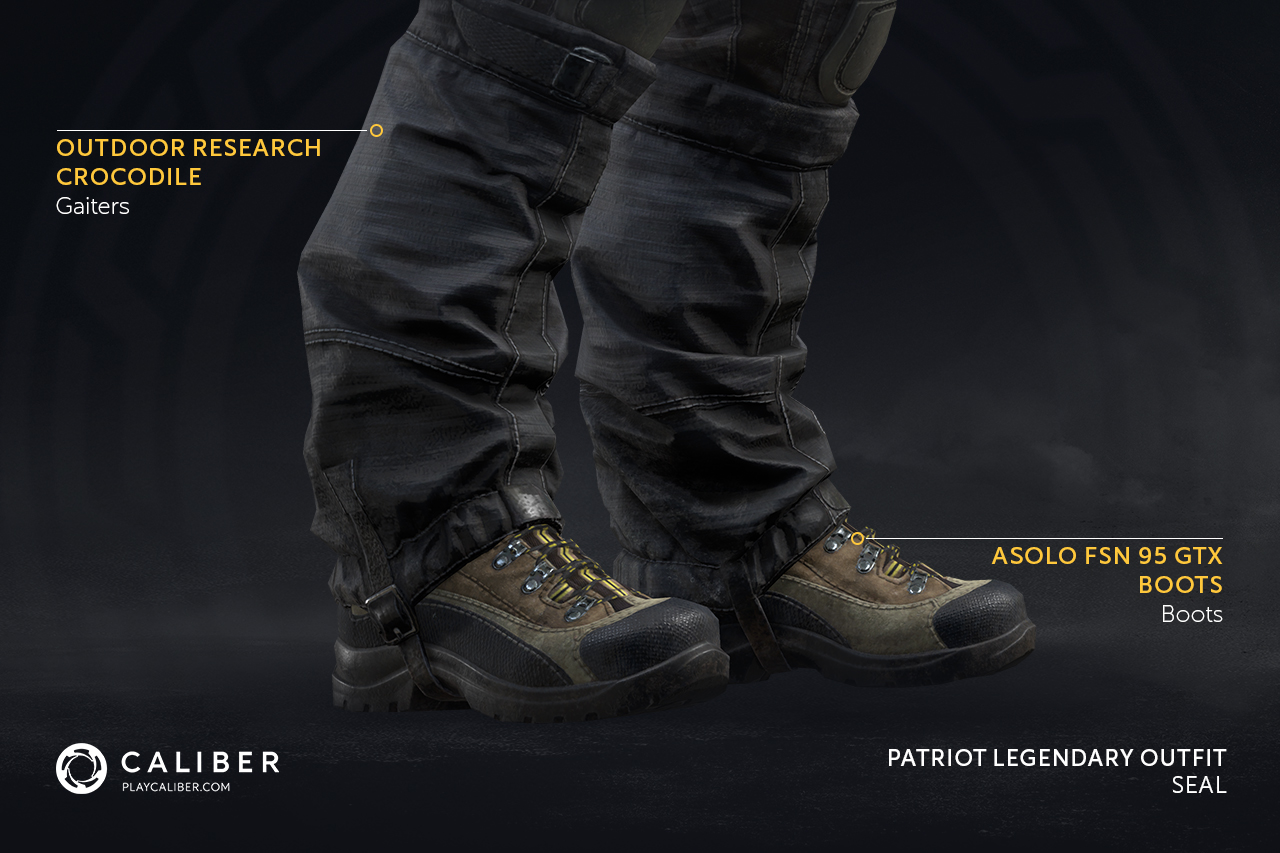
One notable detail about the Patriot outfit in the SEAL collection in Caliber is the El Barrio’s Bravest patch — an insignia of the Engine 53 fire station of New York’s Fire Department. In 2005, before his deployment to Afghanistan, a SEAL Lieutenant Michael P. Murphy asked his friend Owen O’Callaghan for 25 patches from the fire station he worked at. Murphy wanted that patch to motivate him and his compatriots about the 9/11 tragedy.

During Operation Red Wings on June 28th, 2005 in Kunar province, Afghanistan, Lieutenant Michael P. Murphy died together with two other SEAL officers and sixteen members of the US SOF whose helicopter was shot down while trying to help the Navy SEAL unit.
In memory of Murphy’s bravery and valor, his SEAL compatriots often wear a FDNY Engine 53 patch, and the fire station itself had a memorial installed. A destroyer was named in honor of the officer (USS Michael Murphy (DDG-112)), as well as several civilian and military buildings.
In 2013, Lone Survivor, a biographical war film, was released in the USA. It was based on Marcus Luttrell’s book and starred Mark Wahlberg in the main role. The film’s plot covers Operation Red Wings.